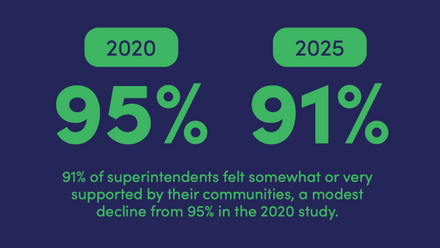How Career & Technical Education Can Position Charter Students for Post-Pandemic Success
How Career & Technical Education Can Position Charter Students for Post-Pandemic Success
By Michael McManus, Career Pathways and School Programs Coordinator, Colorado Charter School Institute
The impact of learning disruptions caused by COVID-19 on schools, teachers, and students has been deep, and time will continue to tell the long-lasting effects those disruptions will have. Since March 2020, anyone engaged with a school has seen the physical, mental, and emotional toll the pandemic has wrought upon our communities. We would like to believe that what we have experienced from this pandemic will be a once-in-a-lifetime occurrence, but our experiences have certainly raised awareness of our vulnerability to be ravaged by another public health crisis. Few subgroups of our population have been as widely impacted by events over the past years as our students, especially those whose focus has been peering over the horizon to see what life had in store after high school.
In our own state, Colorado, the region’s largest children’s hospital declared a “state of emergency” for youth mental health, citing the rise in suicide among school age children and the the chronic stress children are dealing with as factors for this declaration.1 Inside the classroom the impact upon student learning has been equally severe. A recent study from the Brookings showed that test-score gaps between students in low-poverty and high-poverty elementary schools grew by approximately 20% in math and 15% in reading, primarily during the 2020-21 school year. And those gaps increased more between fall 2020 and 2021 than between fall 2019 and 2020.2
A step we can take now towards improving academic outcomes and developing systems that can better endure catastrophic events is to reinforce efforts that have proven to benefit our students. Enhancing connections to meaningful career development engagements through an increased focus on implementing career and technical education programs is one stride schools can take to connect students to learning activities that will position our young learners for future success.
A study of high school students in Arkansas found that students who take an additional career and technical education (CTE) class above the average number of classes taken increases their probability of graduating from high school by 3.2 percentage points and of enrolling in a two-year college the year after high school by 0.6 percentage points. Additionally, students who took a sequence of three or more specific, related CTE classes are 21% more likely to graduate than similar students who did not take that intentional sequence. A greater percentage of these students participating in this sequence are employed right after high school, and their wages are higher as well.3 Clear evidence exists that intentional participation in CTE programs positions students for success after high school, and increasing these opportunities for all students can be a way to learn from our experiences over the past two years..
In an effort to achieve the outcomes cited above, below are benefits students can realize through increased career and technical education program participation::
-
Community Engagement through Work-based Learning. An often cited, negative impact of the pandemic has been the isolation students experienced as a result of shifts to remote learning and quarantine requirements. Intentional work based learning activities, which can include informational interviews, job shadows, and internships provide a vehicle for students to think seriously about their post-secondary plans and engage with community members outside of their immediate circle of classmates, teachers, and at-home supporters. One research study from Stanford University explains the benefits of social connection towards increasing physical and emotional health, “People who feel more connected to others have lower levels of anxiety and depression… have higher self-esteem, greater empathy for others, (and) are more trusting and cooperative…”4
-
Address Systemic Inequalities. Income inequality and unequal opportunities to generate generational wealth persist in the United States, and engaging students in meaningful CTE experiences can be a way to break these cycles. According to the Federal Reserve, Americans with a college degree are collectively worth $22.5 trillion more than when the pandemic began. Those without high school diplomas are worth $10 billion less than they were before the pandemic. Whites collectively are worth about $25 trillion more than when the pandemic started, the same data shows. Black Americans are only worth $1.5 trillion more, and Hispanics $600 billion more. As of 2021, the average Black or Hispanic family has no more than a quarter to every dollar of white family wealth, according to the Income Inequality Institute at the Federal Reserve Bank of St. Louis.5 The US Department of Education reports that eight years after their expected graduation date, students who focused on CTE courses while in high school had higher median annual earnings than students who did not focus on CTE. And 50% of this population earned some type of postsecondary degree or certificate.6 By comparison, the US Census Bureau reported in 2022 that only 48% of Americans had earned at least an associates degree. 7 It is well proven that individuals who hold an earned college degree earn more over a lifetime than those who do not, and the 50th percentile of lifetime earnings for one who possesses an associates degree is $240,000 more than those who hold only a high school diploma and no college degree.8
-
Prepare For a Changing Workplace. By engaging with local businesses through work-based learning opportunities today’s students will gain an understanding of how the world of work is evolving. A greater reliance on remote work in many sectors has created new opportunities for workers, and understanding those opportunities and the skills needed to capitalize on those opportunities before many enter the workforce full-time will position today’s students to better identify a career that is meaningful. The consulting firm McKinsey estimates that over 100 million workers in eight countries studied will need to find a different occupation by 2030.9 Understanding better the shifting landscape they might be entering through real-world learning will allow students to focus on developing transferable skills that will help maintain employment through these transitions.
One school in Colorado, Colorado Early Colleges - Fort Collins, is implementing a new program this summer to nurture the community connections and learning outcomes outlined above called Wolf Works. The school started this program to help students understand better the “symbiotic nature of work” according to Agriculture instructor Tierney Lane. “While classes provide opportunities for skill development, students are often not aware that they should also be developing more than good grades to qualify for future opportunities. Work-based learning emphasizes the value of developing resilience through empathy and innovation. More frequent and early exposure to the needs of people provides context for the challenges that students may face in the workforce.” This pivot to emphasizing real-world learning and connecting students to meaningful engagements with career development opportunities illustrates a way to recognize some of the negative consequences students have experienced during the pandemic and create systems that correct those for future students.
Beyond benefits to students, engaging local businesses and industry partners can be beneficial to the charter schools these students attend, too. Charter schools are held to the same standards as their neighboring public schools and oftentimes must meet those standards with fewer resources. Being able to highlight the strong outcomes produced by students who complete CTE programs and leverage established partnerships with local organizations can help charters bridge that resource gap through innovative partnerships with local business and community groups.
Due to the decline in the population of school aged children in America that has been exacerbated by the pandemic, many schools are facing the financial realities of operating schools that serve a dwindling pool of potential students. Charter schools can leverage positive student outcomes achieved through meaningful career and technical education opportunities in order to stand out among their local peers when presenting their school as a worthwhile program among the many educational options families can consider.
There are many events caused by the COVID-19 pandemic that cannot be reversed; however, we can take this unsettled time to focus on methods we know will positively impact student learning and the communities our students will move on to serve.
1Children’s Hospital Colorado,”Children’s Hospital Colorado Declares a ‘State of Emergency’ for Youth Mental Health”, May 25, 2021, https://www.childrenscolorado.org/about/news/2021/may-2021/youth-mental-health-state-of-emergency/
2 Brookings, “The pandemic has had devastating impacts on learning. What will it take to help students catch up?”, March 3, 2022, https://www.brookings.edu/blog/brown-center-chalkboard/2022/03/03/the-pandemic-has-had-devastating-impacts-on-learning-what-will-it-take-to-help-students-catch-up/#:~:text=As%20we%20outline%20in%20our,students%20in%20grades%203%2D8.
3Thomas B. Fordham Institute, “Career and Technical Education in High School: Does It Improve Student Outcomes?”, April 7, 2016, https://fordhaminstitute.org/national/research/career-and-technical-education-high-school-does-it-improve-student-outcomes
4Standford University Center for Compassion and Altruism Research and Education,” Connectedness & Health: The Science of Social Connection” May 8, 2014, http://ccare.stanford.edu/uncategorized/connectedness-health-the-science-of-social-connection-infographic/#:~:text=People%20who%20feel%20more%20connected,trusting%20and%20cooperating%20with%20them.
5 NBC News, “America's income divide unchanged by pandemic, unless you're a minority or less educated”, October 7, 2021, https://www.nbcnews.com/business/economy/america-s-income-divide-unchanged-pandemic-unless-youre-minority-n1281001
6 US Department of Education, “Bridging the Skills Gap: Career and Technical Education in High School”, September 2019, https://www2.ed.gov/datastory/cte/index.html
7United States Census Bureau, “Census Bureau Releases New Educational Attainment Data”, February 24, 2022, https://www.census.gov/newsroom/press-releases/2022/educational-attainment.html
8 Brookings, “Major decisions: What graduates earn over their lifetimes”, October 8, 2020, https://www.brookings.edu/blog/up-front/2020/10/08/major-decisions-what-graduates-earn-over-their-lifetimes/
9 McKinsey & Company, “The future of work after COVID-19”, February 18, 2021, https://www.mckinsey.com/featured-insights/future-of-work/the-future-of-work-after-covid-19






